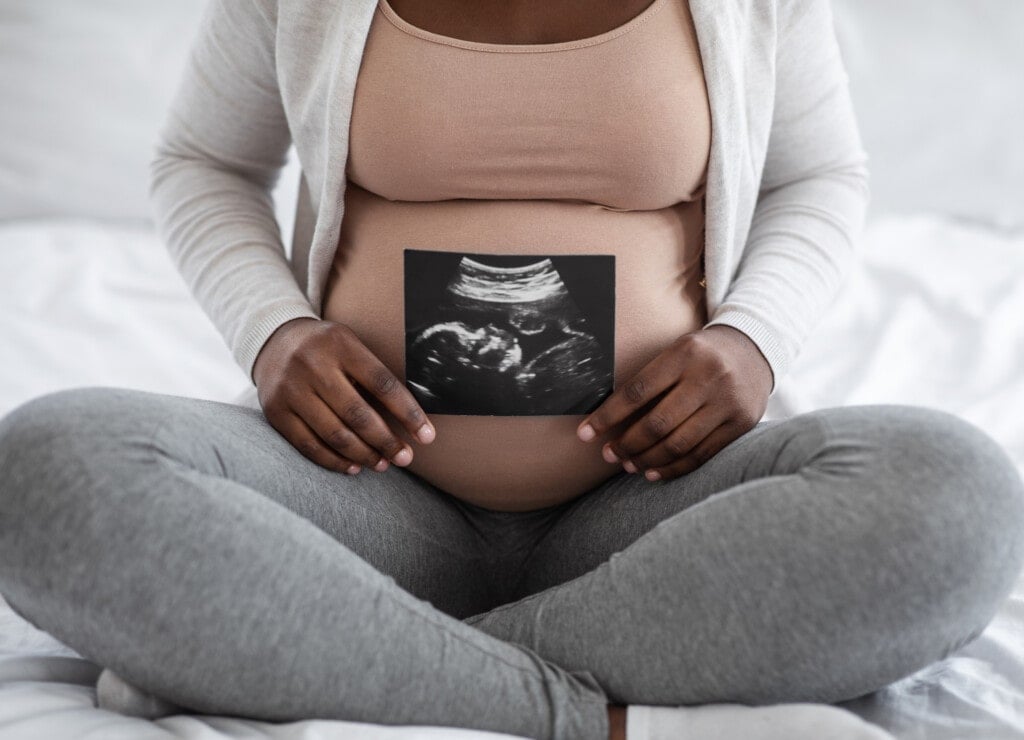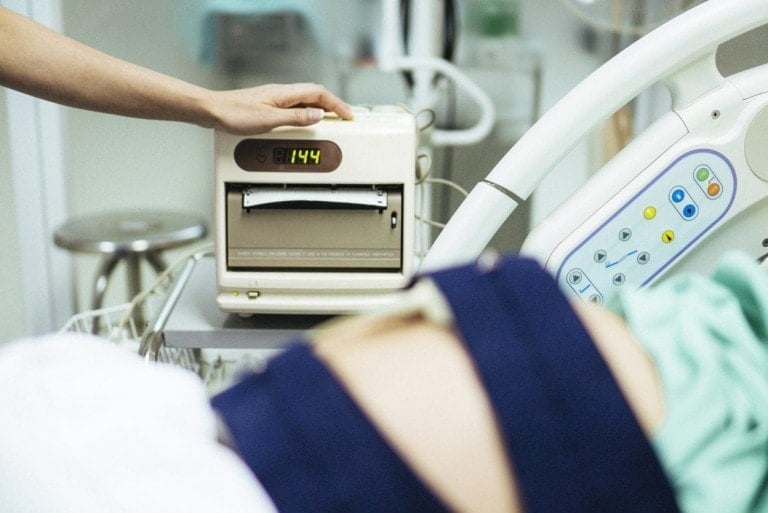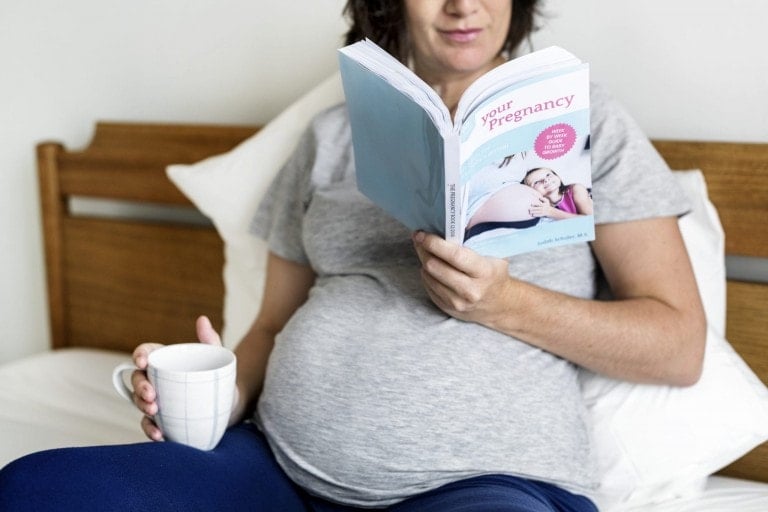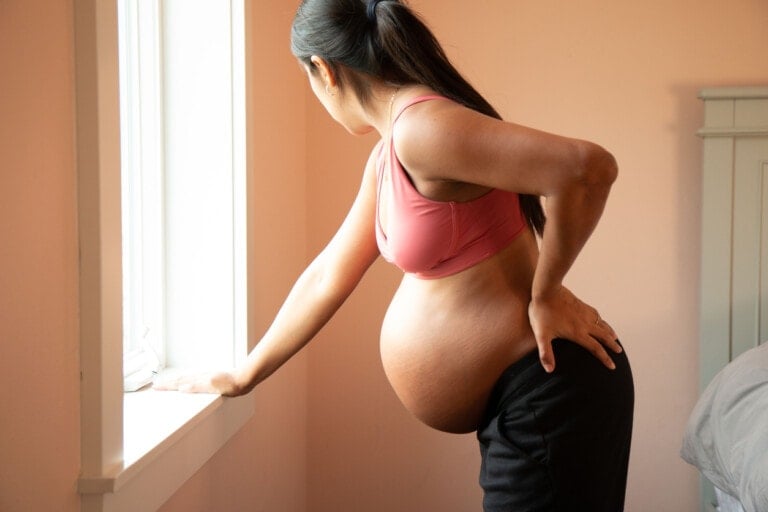As you enter the third trimester, you are closer than ever to giving birth to your new bundle of joy. You’ve spent months watching your belly grow, anticipating the arrival of your newest family member. This is when your nesting instincts start to kick in. Enjoy these final weeks of painting the nursery and narrowing down your list of baby names! Of course, the last trimester isn’t all sunshine and roses. Childbirth has always come with its fair risk of complications, and if you are a woman of color (particularly a Black woman), you are more likely to face poor maternal and infant health outcomes.1 Luckily, most pregnancy-related deaths and complications are preventable, and there are a few steps Black women can take to keep themselves and their babies safe during their third trimester of pregnancy and beyond.2
What Black Women Should Know in the Third Trimester
If you’re a Black woman in your third trimester, here’s everything you need to know to round out those last few months of pregnancy like a pro. This information should help you confidently navigate conversations with your maternal care provider in the weeks leading up to and following birth:
When Exactly Is the Third Trimester?
The third trimester begins on week 27 of your pregnancy and extends until your baby is born. During this period, your baby will develop the ability to see, hear, suck its thumb, and even cry!34
Prepare to interact with your medical team more frequently. Prenatal visits should increase from once a month to once every two weeks. As you enter your final month, these visits will become weekly.
You may also notice that many of these visits focus on your cervix. The cervix is the canal between the uterus and the vagina, making it vital for giving birth. A pregnant woman’s cervix gradually stretches and thins itself in a process known as “effacement.” When you enter labor, it also opens up or “dilates” to make it easier for your baby to move through the birth canal.3 During your third trimester, your doctor or midwife will ask to perform a pelvic exam to check the effacement and dilation of your cervix. Ultimately, this choice is optional but is given to you to see if any cervical change has happened before you are in labor.
Common Symptoms in the Third Trimester
While you approach the finish line in the third trimester, your bump will continue to grow, and your body will start transitioning into “delivery mode.” You will experience a phenomenon known as “dropping” or “lightening,” which happens when the fetus drops into your lower pelvis. This is your body’s way of aligning the baby to pass through the birth canal and usually occurs two to four weeks before you give birth. The shift may cause your baby and uterus to rest on your bladder, often leading to more frequent urination.4
As your body begins to prepare for delivery, other common third-trimester symptoms include:6
Hair Growth
Hormonal changes can cause more hair to grow on the arms, legs, and face.7
Increased Body Temperature
Your baby’s body radiates body heat, like your own, which can elevate your overall body temperature.8
Colostrum
This thick, yellow fluid is the precursor to breast milk, and your body might start making it as early as 12-16 weeks gestation. Some women may leak during pregnancy, while others do not — both are normal! Some refer to colostrum as “liquid gold” because of the healthy nutrients it contains.33
Loose Joints
Your body releases the hormone relaxin to loosen your muscles, easing delivery.9 This sensation can be felt most in your pelvis and lower back as your baby grows, placing more pressure on these areas.
Return of Fatigue
Though fatigue may disappear during the second trimester’s “golden period,” it’s typical for it to return in the third trimester — until it’s time to give birth.10
Increased Vaginal Discharge
Increased white vaginal discharge, known as “leukorrhea,” should be odorless. Consult a physician if it’s yellow or green, as this could signify an infection.11
Discomfort and Trouble Sleeping
As your baby bump reaches its full size, you may feel discomfort throughout the day. Consider a maternity body pillow if you have difficulty sleeping.
Braxton Hicks
Other symptoms to watch out for in the third trimester are Braxton Hicks contractions and/or prodromal labor pains, which can also be referred to as “false labor.” Braxton Hicks contractions are the body’s way of preparing for labor — but don’t worry, you’re not giving birth yet. Think of these contractions as muscles exercising and preparing for the big day. The uterus muscles will tighten for approximately 30-60 seconds and last up to two minutes. Some women describe Braxton Hicks as mild menstrual cramps. Other women describe it as a tightening sensation around their abdomen. And some women don’t notice them at all. If your contractions ease up instead of intensifying, they are probably Braxton Hicks. The key identifiers of Braxton Hicks contractions are:12
- Infrequent
- Unpredictable
- Non-rhythmic
- Uncomfortable, not painful (although for some women, they aren’t noticeable)
- Do not increase in intensity or frequency when they are happening
- Taper off and then disappear altogether
Braxton Hicks contractions are normal and not a cause for concern. You can alleviate Braxton Hicks contractions with a few tried and tested tips:13
- Change positions (lie down if you have been standing, or go for a walk if you have been sitting)
- Take a warm bath for 30 minutes or less
- Drink a couple of glasses of water
- Drink a warm cup of herbal tea or milk
In contrast to Braxton Hicks contractions, real contractions become more intense over time and are evenly spaced.31 If you are unsure whether your contractions are labor contractions or Braxton Hicks, grab a stopwatch or contraction timer app and track their spacing, or consult your healthcare provider.
Possible Third-Trimester Health Complications
According to a 2016 analysis of data from New York City hospitals, Black women are more likely to face life-threatening pregnancy or childbirth complications than white moms.25,26 Black women must be aware of several pregnancy complications, especially during the third trimester. A few of them are:
Preeclampsia
Preeclampsia is a pregnancy complication involving sudden-onset high blood pressure in pregnant women. Other symptoms of preeclampsia are protein in the urine and severe swelling in the face and hands. It can occur as early as 20 weeks but usually in the third trimester, more commonly at the end of pregnancy (36+ weeks). If you don’t receive treatment for it, it can lead to severe complications for both you and your baby.14
Pregnant Black moms are more likely to be diagnosed with preeclampsia in their third trimester and experience more severe outcomes than white women.15 This is because Black women have higher rates of high blood pressure, hypertension, diabetes, sickle cell disease, obesity, and vitamin D deficiency.30
HELLP Syndrome
HELLP syndrome is a serious pregnancy condition that typically happens with preeclampsia during the third trimester. It was named after its characteristics:16
- H: Hemolysis, which is the breaking down of red blood cells
- EL: Elevated liver enzymes
- LP: Low platelet count
In the United States, 5-8% of pregnant women develop preeclampsia, and 15% of these women develop HELLP syndrome. This means about 45,000 women per year develop HELLP syndrome.16 Unfortunately, Black women are also at a higher risk of being diagnosed with HELLP syndrome because they are at a higher risk of being diagnosed with preeclampsia.14
Preterm Birth
Preterm labor is when an expecting mom experiences contractions that efface and dilate her cervix after 20 weeks and before 37 weeks of pregnancy.17 It can result in premature birth. The Centers for Disease Control and Prevention (CDC) reports that the preterm birth rate declined by 1% in 2022 to 10.4%, following an increase of 4% from 2020 to 2021. However, racial and ethnic differences in preterm birth rates remain.27
The preterm birth rate among Black women is 14%, almost 50% higher than the rate for white or Hispanic women.18 This is why Black women need to talk to their healthcare providers even more in the third trimester when preparing for labor and delivery to reduce their risk of these pregnancy health complications.
Signs You Are About To Go Into Labor
The day is finally here — you are about to deliver! You may experience anxiety, but remember that your body is designed to give birth. Watch out for the following signs and symptoms to know it’s time:
Changes in Your Vaginal Discharge
It’s common to have a thick, pink discharge a few days before giving birth. This discharge is commonly called “bloody show.”19
Loss of the Mucus Plug
The mucus plug seals the opening of the cervix. It slips out days to hours before delivery and appears clear, bloody, and pink.4
Lower Back Pain
Backaches could be a sign that labor will start soon.21 This is an especially strong sign if you also experience pain in your legs that isn’t relieved when you change position.
Water Breaking
A release of amniotic fluid, or “water breaking,” can be one of the final signs you are going into labor. Despite what Hollywood may have you believe, only 15% of women experience water breaking before giving birth.20 Most may experience water breaking during labor, delivery, or even preterm. Once it breaks, you’re more likely to feel a “trickle” than a large “gush” of amniotic fluid.20,22
Contractions
Unlike Braxton Hicks contractions, labor contractions are evenly spaced and become more intense over time.31 Your contractions are the best way to tell if you are going into labor. Once they’re strong enough to limit walking, are spaced five minutes apart, last for 45 seconds to one minute long, and that is a continuous pattern for one hour, it’s time to head to the hospital.32
The Labor Process
Be sure to map out your birth plan in advance with your provider, partner, doula, friend, or whoever else will be supporting you on the big day. Ensuring you’re prepared will make it easier and less stressful to call your provider and get to the hospital quickly — even when you’re (inevitably) feeling stressed.
Once labor begins, you can expect to go through the following three stages:21
- First stage of labor: Contractions, followed by the thinning and opening of the cervix until it has dilated to 10 centimeters.
- Second stage of labor: This is the active stage where expectant mamas breathe, push, and give birth to their baby.
- Third stage of labor: This is when the womb contracts and the placenta is delivered. This process typically takes five to 30 minutes, usually with the help of Pitocin.
The labor process usually lasts 12 to 24 hours if it’s your first child.22 Don’t worry. It gets easier! After the first birth, the time a woman spends in labor with her second child drops to an average of eight to 10 hours.22
Post-Birth
As you might expect, the first hour after your baby is born is incredibly precious. Your baby will be fully awake, making this an excellent opportunity to bond. The American Academy of Pediatrics (AAP) recommends laying your newborn on your chest for skin-to-skin contact.28 Most women who give birth without complications stay in the hospital for one to two days afterward.
You will likely meet with a lactation consultant who will show you how to encourage your baby to latch. Post-delivery contractions of the uterus are standard but can be painful. Vaginal tearing is relatively common and often heals within a few weeks on its own. In more severe cases, when the tearing is more extensive, a doctor will provide stitches to the affected area and recommend pelvic floor physical therapy.23
Postpartum Depression
With a host of routine and hormone changes, it’s normal to feel down in the first few weeks following pregnancy. Yet, while the post-pregnancy “baby blues” are typical, these feelings should subside and improve in a few weeks once you and your baby get into a healthy eating and sleeping routine. If your symptoms disrupt your everyday life or make it hard to care for you and your baby, you may be experiencing postpartum depression (PPD), which affects 6.5-20% of new moms.24 Here are a few symptoms to look out for:25
- Lack of interest and pleasure in daily activities
- Insomnia or excessive sleeping
- Lack of energy
- Inability to concentrate
- Hopelessness
- Overwhelming fatigue or loss of energy
- Feelings of worthlessness or extreme guilt
- Thoughts of harming yourself or your baby
- Recurrent thoughts of death or suicide
Women of color are more than twice as likely to experience PPD than their white counterparts, so Black women need to look out for these tell-tale warning signs during their third trimester and postpartum and get treatment immediately.26 Your general practitioner can prescribe antidepressants or refer you to a mental health professional who can help.
Choosing the Right Team
The third trimester signals the end of your pregnancy and the beginning of your new life as a mother. Now that you have added another member to your family, you will need to find a pediatrician. The AAP recommends check-ups three to five days after birth, then at 1, 2, 4, 6, 9, 12, 15, 18, and 24 months post-birth.29
If your pediatrician doesn’t listen to you or answer your concerns, don’t be afraid to shop for a new medical provider and speak up for yourself. Your baby’s health is in your hands, and the first five years of their life can majorly impact their long-term well-being.
Lastly, don’t forget to find time to take care of yourself. Feel encouraged to lean on the people who supported you best during your pregnancy journey — your OB-GYN, midwife, doula, or others in your network — for post-pregnancy concerns.






























